Nexus | Park | City : Changchun, China
Urban and Landscape Design: Changchun CHINA
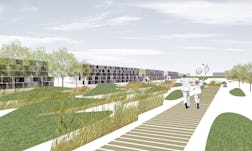
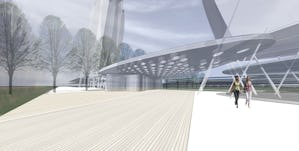
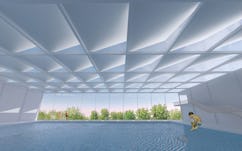
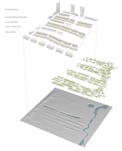
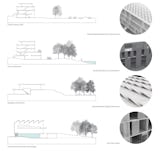
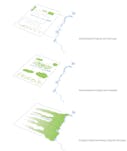
This development, located along the Yitong river on the outskirts of Changchun, proposes an alternate approach to the dominant type of gated single family subdivision development currently underway in China. The project intertwines a networked infrastructure of landscape types with housing, treating the built realm as part of an interrelated ecosystem that seeks to maximize the degree to which the built domain and its landscape might commingle and foster new types of relations among its inhabitants. Higher density housing allows for more of the land to be consolidated into significant areas that can support natural processes, both for the management of site storm water, grey water and for the production of ecological complexity and experiential delight.
A series of ‘fingers’ connect the project’s landscaped spaces with the adjacent regional network of the watershed. Inhabitants interact with this landscape and with their community through a series of continuous recreational circuits that offer a variety of active and passive opportunities for leisure within the public realm. Each East-West band is figured after a proto-typical regional ecosystem type, so although their performance is limited by dimension, they collectively form an internal microcosm of the broader regional structure, replete with wide variety of flora and fauna. Each building addresses the block exterior at grade, and relates to the internal landscape at the upper level. The housing is designed so as to modulate the extreme summer heat and winter cold experienced at 43° latitude. In addition to designing all buildings with high performance envelopes, and energy efficiency gained from row housing, a range of building vocabularies are developed that respond to the solar orientation and adjacent urban space conditions of each type, allowing the array facades that result to provide the architectural identity unique to specific locations within this matrix and direct access to the adjacent landscape network.
In order to foster the range of conditions necessary to support this diversity, extensive topographic operations refigure the existing flat terrain to generate a series of folds that can capture and retain water at a variety of depths and durations initiating and propelling vegetal differentiation. Specific planting configurations seed the succession model that minimizes active maintenance requirements while promising a rich tableau of conditions and experiences.
| Typology | Urban and Landscape Design |
| date | 2008 |
| location | Changchun, China |
| scale | 52 acres |
| scope | Masterplan, Ecology and Building Prototypes Design; Invited Competition: 1st Place Commission |
Team
| Project Team | Geoffrey Thün, Kathy Velikov, Colin Ripley, Paul Raff, Matt Peddie, Sonja Storey-Fleming |